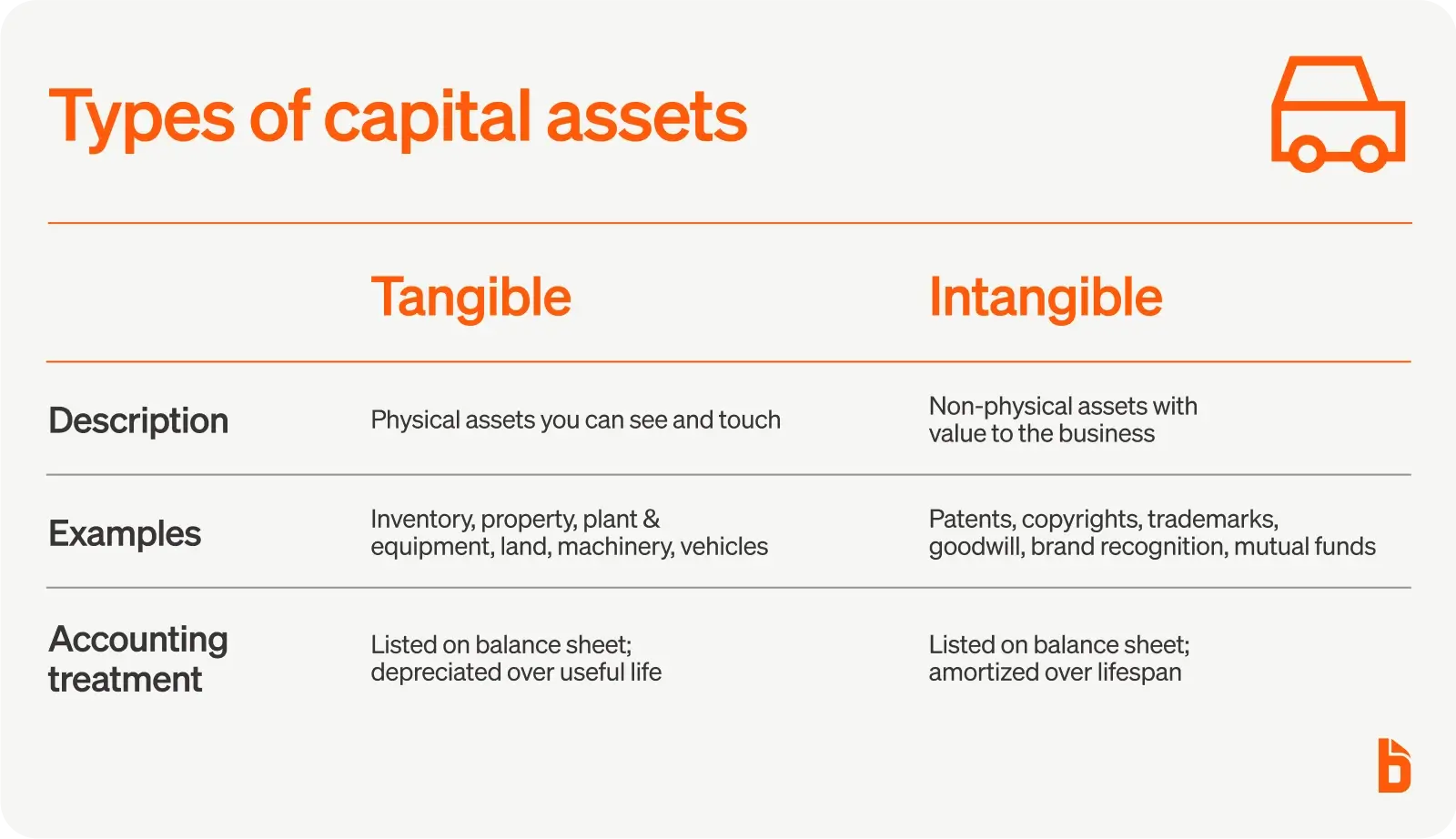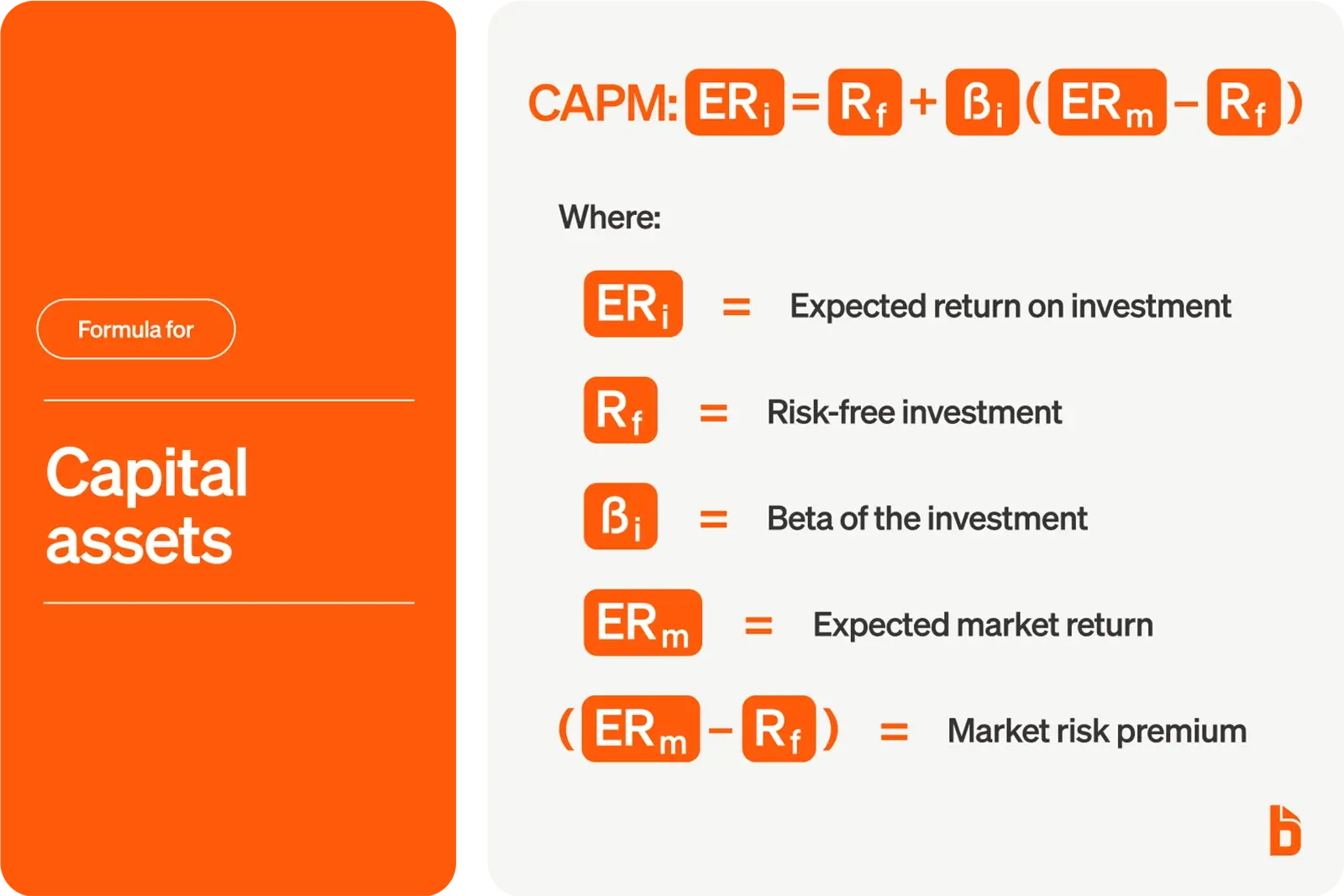Investing in capital assets can be a great way to grow wealth over time or build your business. But before you start investing, it's important to understand what capital assets are and how they work in financial economics.
A good way to know if a capital asset will be beneficial for your company is to use a popular tool used to evaluate investments called the Capital Asset Pricing Model (CAPM). Here is everything you need to know about capital assets and the Capital Asset Pricing Model (CAPM).
Before you begin spring cleaning your business finances, consider optimizing your financial workflow with BILL's efficient financial automation software.

What are capital assets?
Capital assets are any significant assets, such as a car or property, that can provide a business with revenue for over a year. These assets are typically expected to provide a return on investment (ROI) over a period of years, and their value may appreciate or depreciate depending on market value. They can be tangible, such as homes, cars, investment real estate properties, stocks, bonds, and certain collectibles, or intangible, such as trademarks, patents, and stocks. For a company, capital assets are intended to be used for a year or longer, such as an employee vehicle or office printer. These assets are crucial for the long-term financial security of a company or an individual.
Capital assets represent an opportunity for investors to earn income or realize capital gains over time. Investors may hold capital assets in their market portfolio for an extended period if the investment generates a positive return.

Types of capital assets
A few types of capital assets exist: tangible and intangible assets.
Tangible assets are something you can see and touch. They are assets that have a physical form and can be used or consumed by a business to generate revenue and increase cash flow. Examples of tangible assets include inventory, property, plant and equipment (PP&E), land, machinery, and vehicles. These assets are typically listed on a company's balance sheet and are subject to depreciation over their useful life.
Intangible assets are assets that do not have a physical form but have value to a business. They are long-term assets that are expected to provide economic benefits to a business over time. Examples include patents, copyrights, mutual funds, trademarks, goodwill, and brand recognition. Many of these assets can also be listed on a company's balance sheet and are subject to amortization over their lifespan.
To know if a capital asset is a good investment for a business, they should look into the risks and potential return on investment (ROI) using the Capital Asset Pricing Model (CAPM).

What is the Capital Asset Pricing Model (CAPM)?
The Capital Asset Pricing Model (CAPM) is a modern financial model used to establish a relationship between the expected ROI of an investment and the risk. It is widely used in modern portfolio theory due to its ease of use, ability to stress test the investment, and ability to easily compare individual assets and investments.
The model considers the risk-free rate, the investment's beta, and the expected market return to determine the appropriate required rate of return. CAPM is a way to measure risk and required rates of return based on the riskiness of the assets and the cost of capital. Investors expect to be compensated for the time value of money and the risk of the investment.

CAPM: ERi = Rf + βi(ERm− Rf)
Where:
ERi = expected return on investment
Rf = risk-free investment
βi = beta of the investment
ERm = expected market return
(ERm-Rf) = market risk premium
The risk-free rate is the rate of return an investor can expect to earn on an investment that carries zero risk. The risk-free rate is commonly equal to the current inflation rate minus the interest paid on Treasury bills that match the duration of your investment.
The expected market return is the rate of return that investors expect to receive from the overall financial markets based on historical returns. The expected market return reflects the overall performance of securities markets and the stock market and serves as a benchmark for evaluating the performance of individual capital assets.
Beta is a measure of a capital asset's systematic risk level. If a capital asset has more risk than the market, it will have a beta greater than one. If a stock's beta is less than one, the formula assumes this investment will have reduced portfolio risk.
CAPM example
Let's say that ABC Corporation, a manufacturing company, is considering investing in a new production facility requiring significant capital. To determine whether this investment is worthwhile, the company uses the Capital Asset Pricing Model (CAPM) to estimate the expected return on the investment.
First, the company gathers the necessary data, including the risk-free rate of return, the expected market rate of return, and the beta of the investment. Let's say that the risk-free rate of return is 3%, the expected market rate of return is 10%, and the beta of the investment is 1.2.
Using the CAPM formula, the expected return on the investment is calculated as follows:
Risk-free rate = 3%
Beta = 1.2
Expected Market Return = 10%
Expected Return = 3% + 1.2 x (10% - 3%) = 11.4%
Based on this calculation, the company can expect a return of 11.4% on its investment in the new production facility. This expected return is then compared to the company's required rate of return to determine whether the investment is worthwhile.
Using the CAPM in this way allows ABC Corporation to make an informed decision about its investment in the new production facility. By considering the risk-free rate, expected market return, break-even point, and specific investment characteristics, the company can estimate the expected return and determine whether it is a good opportunity for the business.
Benefits of CAPM
Benefits of using the CAPM include:
- Ease of Use: The CAPM is a simple calculation that can easily be used to stress-test a range of outcomes and to estimate the expected return on an investment.
- Comparability: As the CAPM uses market data, investors can compare different investments without having to make assumptions about individual assets.
- Flexibility: The CAPM can be applied to any kind of security or asset, not just stocks.
- Cost: The CAPM does not require complex calculations or data collection, which reduces the cost of applying the model.
Limitations of CAPM
Some limitations of CAPM include:
- Can make unrealistic assumptions: The CAPM assumes that most investors are rational and risk-averse and that markets are efficient. It also assumes that security markets are very competitive and efficient. However, these assumptions may only sometimes hold true in practice.
- Assumes all investors have the same information: The CAPM assumes that all investors have access to the same information and make decisions based on the same assumptions. In reality, some investors may have access to more information or may make different assumptions.
- Assumes all investors have the exact same expectations: The CAPM assumes that all investors have the exact same expectations regarding the future performance of an investment. However, investors may have different expectations or react differently to the same information.
- Relies on a linear interpretation of risk vs. return: The CAPM assumes that risk and return are linearly related, which may not be the case. Some assets may have a non-linear relationship between risk and return.
Fuel your growth with better management of ALL your assets
Despite its limitations, the CAPM helps investors assess the risk of an investment and determine whether it’s worth the potential return. Ultimately, this model provides insight into whether a potential investment opportunity is worthwhile.
But capital assets are only one part of the puzzle. You also need to stay on top of your short-term assets. BILL makes tracking your accounts receivable and accounts payable a breeze, so you always know what’s flowing in and out of your business—and what you have available to invest.
Try BILL today and gain control of your business’s financial health.


